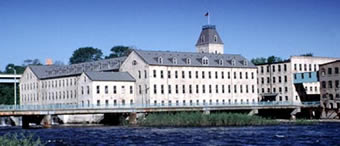|
What other factors might affect project eligibility?
Answer
Certain factors and conditions can determine whether a potential
project is eligible for the 20% tax credit.
Physical Integrity
The 20% tax credit for historic preservation is meant to preserve
historic buildings, and not to create buildings that look
old, but that are in effect new buildings. Thus, the Preservation
Tax Incentives are not available where there is insufficient historic
material to preserve at the outset of the rehabilitation. Once the
integrity of a building has been lost due to deterioration, damage,
or previous alterations, it can never be regained. While new material
can exactly copy significant features, material integrity itself
can never be re-created. It is important to select a building for
rehabilitation that retains its basic physical integrity before
rehabilitation.
Non-historic Surface Coverings
Some historic buildings have been covered with non-historic surface
coverings that obscure the building underneath. In these cases,
it may be necessary to remove the covering to make sure that there
is enough historic building material remaining that the building
still qualifies as historic.
Multiple Buildings
Farms, mills, and other historic properties often have more than
one building. For properties with multiple buildings that were functionally
related historically, the rehabilitation certification decision
will be based on the effect of the overall rehabilitation on the
entire property, and not on each structure or individual component.
Moved Buildings
Moving a historic building can jeopardize its listing in the National
Register of Historic Places, and special procedures must be followed
to ensure its continued listing. Likewise, moving a building into
or within a historic district may jeopardize its ability to contribute
to the significance of the district. If a building will be moved
as part of the rehabilitation project, consult with the SHPO as
soon as possible.
Demolition
Projects that involve demolition require careful planning to ensure
approval. This is true whether whole buildings will be demolished
or only parts of a structure.

|

